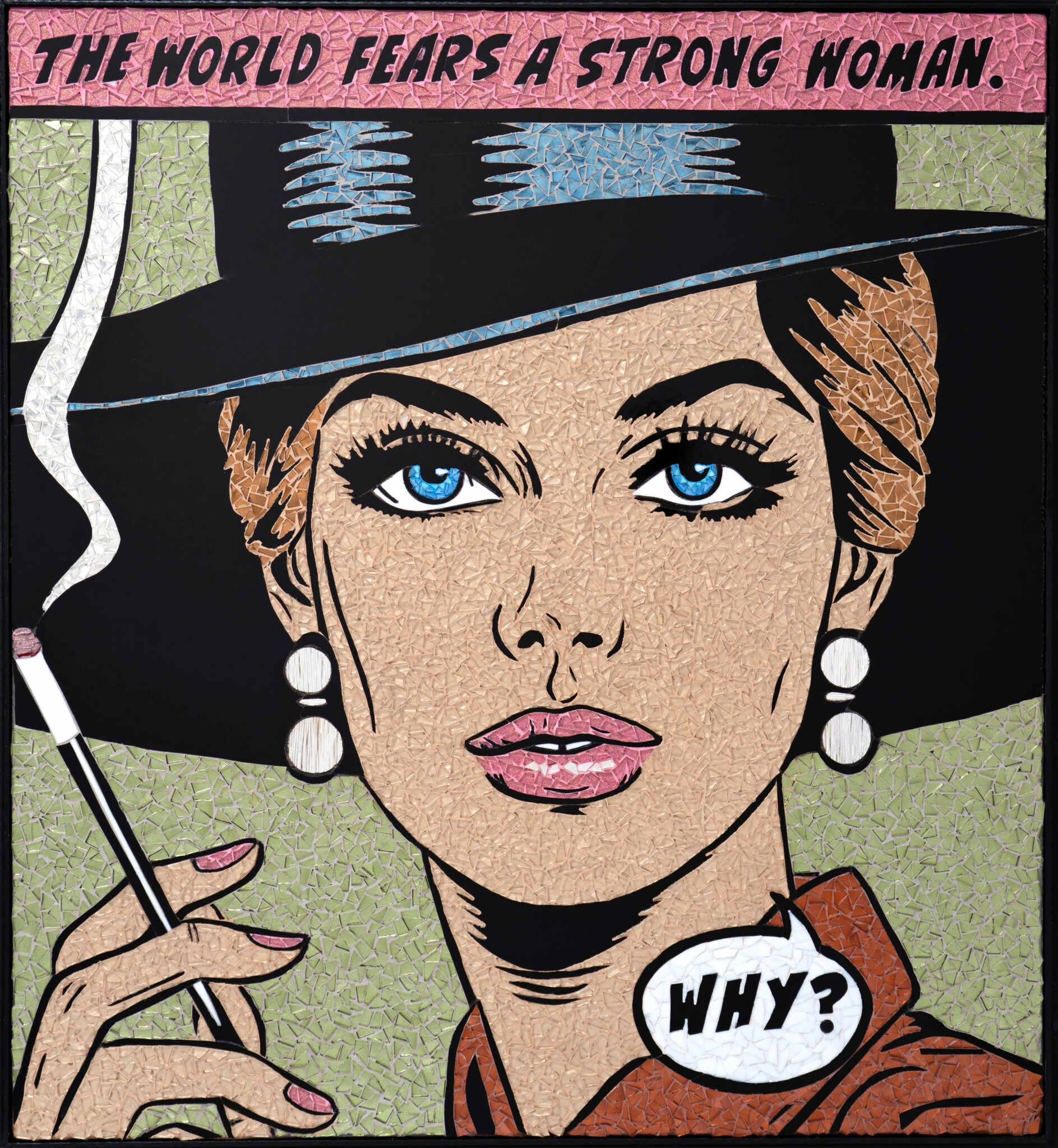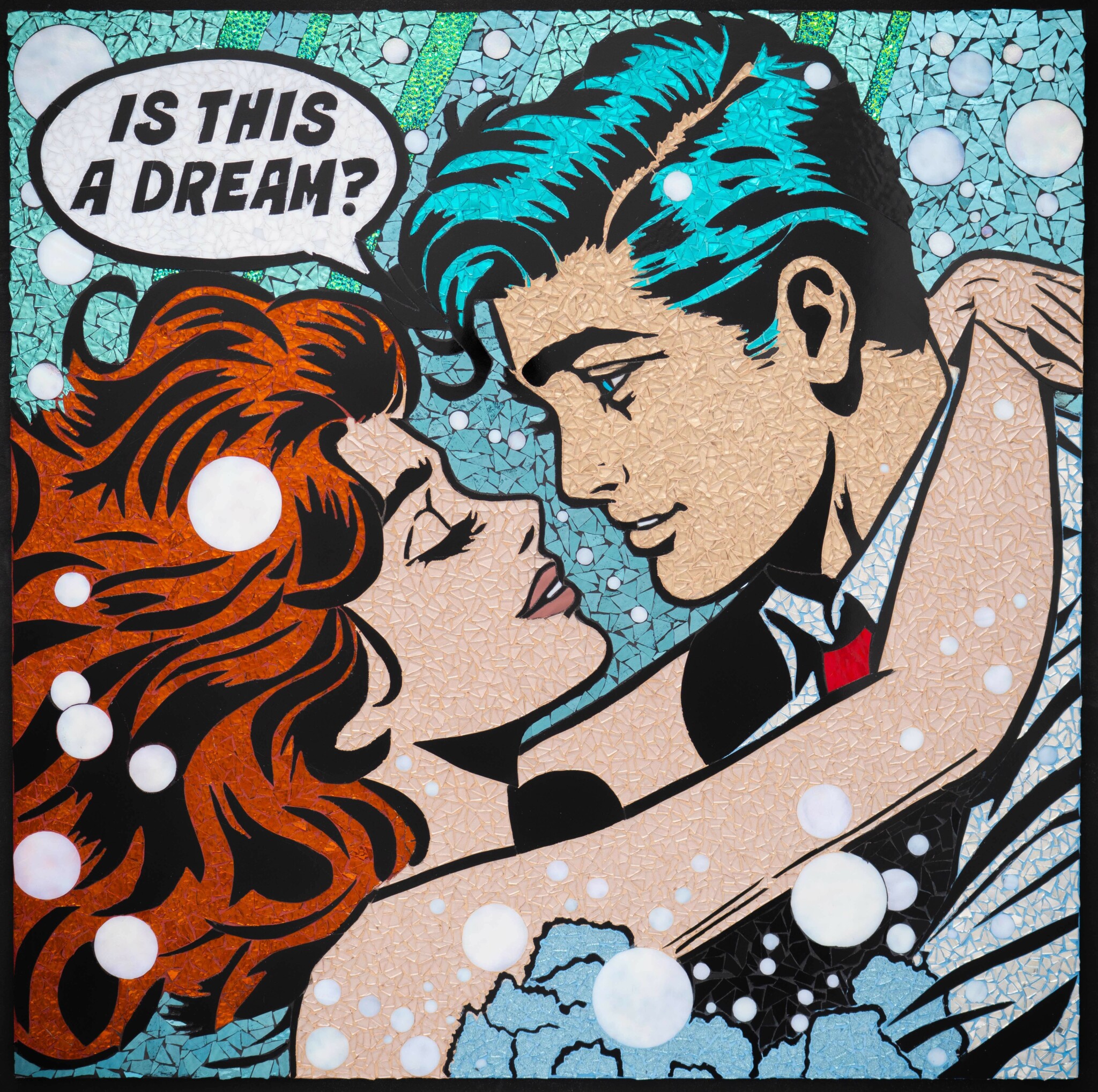We’re excited to introduce you to the always interesting and insightful Sarah Fishbein. We hope you’ll enjoy our conversation with Sarah below.
Sarah, looking forward to hearing all of your stories today. So let’s jump to your mission – what’s the backstory behind how you developed the mission that drives your brand?
As an artist, I bring over 25 years of experience in several creative fields. As well as my work in mosaics, I also co-own and operate a video production company with my husband. Throughout my career, I’ve been a strong female leader working in male-dominated fields. I’ve had to work harder, prove myself repeatedly, and fight for every bit of success and recognition.
I can recall too many instances where my value and judgement was underestimated simply because I’m a female. Over time, these micro aggressions build up and I l chose to carry on without much fuss, but in my heart and soul I needed an outlet to express my true feelings and that outlet became my work in mosaics.
When I began to incorporate comic images and phrases into my work, I found a way to express the emotions I had bottled up for years.
My art focuses on exploring what it truly means to be a strong woman. I am not looking to dominate men, overpower others, or embody the “Rosie the Riveter” archetype, instead I am looking to celebrate the everyday complexities of women. My work highlights the moments where women make their own choices, forge their own paths, and embrace the beautiful strength within themselves.
The characters in my mosaics reflect the nuanced beauty and resilience of women and resonate deeply with audiences at galleries and art fairs. Countless women have shared their stories with me, pointing to my mosaics and saying, “This is me.” That connection, the feeling that you have deeply touched someone is most often the inspiration that helps me to create.


Awesome – so before we get into the rest of our questions, can you briefly introduce yourself to our readers.
Working in glass has always intrigued me. In my early 20s, I began experimenting with mosaics. Basic stuff at first like flowerpots, jewelry boxes, and table trivets. They were a bit crude, to be honest, but they kindled a fire deep inside me. Despite their simplicity, I fell in love with the medium. Mosaics are tactile, breakable, solid, and possess a reflective beauty like nothing else. At this point in time, mosaics was still just a hobby and I would dabble in it from time to time, but never found the urge to go much deeper.
In my mid-20s, I met my husband, a photographer and filmmaker, and together we built Crazy Duck, a successful video production company. This lead us to work on several incredible projects over the years, such as touring with U2, producing short films and documentaries for the New York Public Library and PBS and filming coasters for Six Flags theme park and for the last fifteen years I have also been responsible for interviewing top musical talent at most iHeartRadio festivals and events. It was creative, exciting, and fast-paced work that kept us constantly on the move.
Just before COVID arrived, I was hired to produce video content for a large, non profit organization in Raleigh, North Carolina. As if Covid wasn’t enough stress, this organization was extremely male dominated and once again, I found myself craving a creative outlet—something tactile, something personal. Mosaics would be the perfect outlet.
Once again I was working on basic, simple projects like table tops and plant stands. Then one day, my husband dropped a stack of old romance comics in my lap, suggesting: “Why not try incorporating these images into your mosaics? We are running out of tables” At first, I dismissed the idea—I didn’t think I could. But soon, my imagination began to take off. In short order I began to utilize my years of experience in video production, photography, and digital editing. I realized that I could use those skills to transform the comics into something uniquely mine.
I began digitally collaging layers of images to create my own faces, forms, and narratives. It felt like I had finally discovered my style—a marriage of my love for mosaics and my fascination with storytelling. I experimented with different types of glass, learned intricate cutting techniques, and taught myslef to dye and manipulate grout. My works became larger and, through trial and error, I would learn something new with each piece.
The work began to evolve very quickly. Basucl, playful mosaics of lips and hearts soon grew into larger, bolder pieces featuring characters and narratives, becoming more complex, more expensive to make, and more much more personal to me. COVID, for all its challenges, gave me the time and space to refine my craft and create something truly unique—something no one else was making.
I wanted to create glass mosaic comics that truly looked like comics. Traditional mosaics often feature smaller pieces that can make the forms and lines look fractured or abstract. Instead, I pioneered a technique using large pieces of black glass for bold lines, paired with smaller, more traditional pieces for color. This approach, while more time-intensive and challenging, creates a clean, graphic effect that brings the comic style to life.
Each mosaic takes an average of 150 hours to complete, requiring skillful precision and patience. I take immense pride in knowing my work is not easily replicated. My mosaics, born from experimentation and passion, are now sought after by collectors, and I feel deeply grateful to share something so personal with the world.


What else should we know about how you took your side hustle and scaled it up into what it is today?
Despite the rewarding career I shared with my husband, a part of me yearned for something that was entirely my own. I found I was spending so much more time involved in the world of glass than video production. My husband embraced my enthusiasm and helped me to expand my workspace.
At first, I kept my work very private, but in search of learning new techniques I began to seek out information online. Often I would question some of information and look for better ways to accomplish things. Each question, each experiment—whether a success or failure—pushed the boundaries of my creativity. That process allowed my art to evolve and ultimately became a style that was uniquely mine, nearly impossible to replicate. Eventually, I began to share some of my work on social media, within mosaic-focused communities. To my surprise, the response was overwhelming—people were in awe of my work.
When I started reaching out to galleries, I faced a lot of rejection. I was told hat they weren’t as valuable as traditional oil paintings and repeatedly lectured that mosaics were not marketable. Undeterred, I explored alternative paths. I joined artist collectives, submitted to open calls, and took risks by showcasing my work at art fairs. A move from the Carolinas to the NYC area also brought new opportunities. The momentum slowly began to build.
It took a few years, but my work began to turn heads. People began to believe in me as an artist. I was now able to make significant sales and I was building relationships in local art communities. I also began to garner attention from the press. The local news aired a feature on my work, newspapers wrote stories, and I started to see my art published in magazines and books. At this point, smaller venues started to offer me solo shows and I began participating in larger art fairs. I saw this as the best way to have my work by thousands of people instead of hundreds. Gradually, my collector base grew.
To make my work more accessible, I created a shop on my website featuring smaller, more affordable pieces. These “starter pieces” often led collectors to invest in my original, one-of-a-kind works and many of those have become repeat buyers.
I sought advice from art advisors, fellow artists, collectors, and curators. Building a trusted tribe of supporters has been invaluable. Their guidance, encouragement, and belief in my work have been instrumental in my growth as an artist.
My work is now being shown on both national and international stages. This year alone, my mosaics are featured in Dubai at the Waldorf Astoria and W Hotels, and I’ve partnered with a large contemporary gallery in Philadelphia and New York City.
The journey hasn’t been easy, but every step—every rejection, risk, and triumph—has helped me move forward.


Is there something you think non-creatives will struggle to understand about your journey as a creative? Maybe you can provide some insight – you never know who might benefit from the enlightenment.
Art isn’t a 9-to-5 job. There’s no steady paycheck, no guaranteed income stream. Most days, you’re working alone for long hours, driven by a hunch or a vision. To thrive as an artist, you need thick skin, a resilient personality, and an unwavering belief in yourself and your work. I’ve learned that trusting my gut and following my instincts has led to the most rewarding moments of my career. The art I’ve created during those times—the pieces born from raw intuition and conviction—are the ones that resonate most deeply with my collectors.
I mentioned that I sought advice from others in the art world and continue to do so. Building your own “advisory board” of experts is crucial to your success. Surround yourself with people who truly understand the business of art and can guide you in the right direction. Find an accountant who knows the nuances of the art world, a curator who understands your vision and can articulate it, and a marketing professional who knows how to promote your type of art effectively.
Lastly, diversifying your income streams is key. It gives you the freedom to make thoughtful decisions, rather than operating from a place of desperation. Continuing my work as a video producer has allowed me to succeed in both of my businesses without being overwhelmed or financially stressed. Having that balance not only supports my artistic career but also allows me to approach my work with clarity and creativity.
Contact Info:
- Website: https://www.sarahfishbeinmosaics.com
- Instagram: @sarahfishbeinmosaics
- Facebook: @sarahfishbeinmosaics
- Linkedin: Sarah Fishbein


Image Credits
Chuck Fishbein took all images


